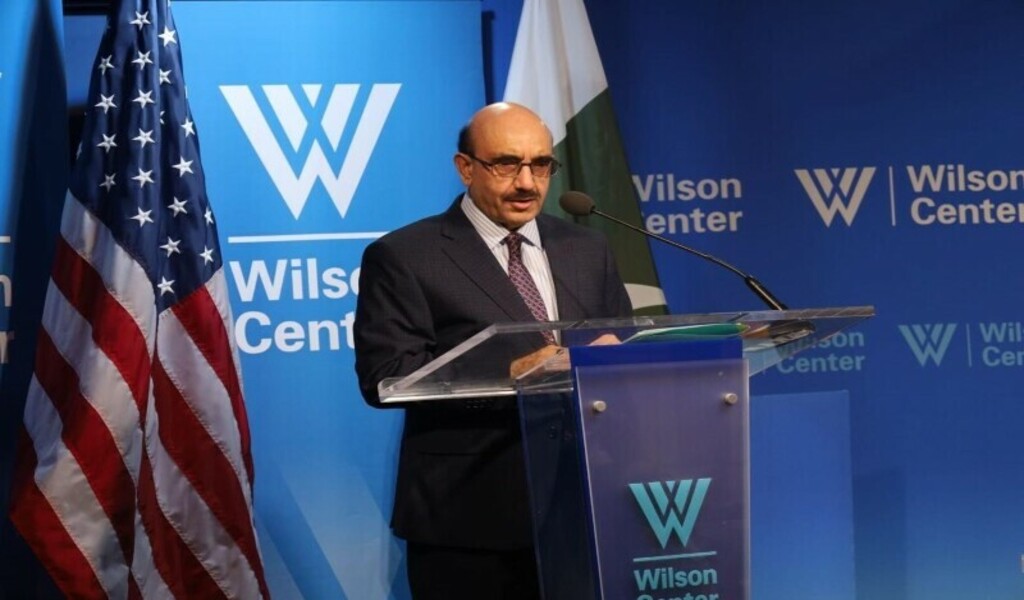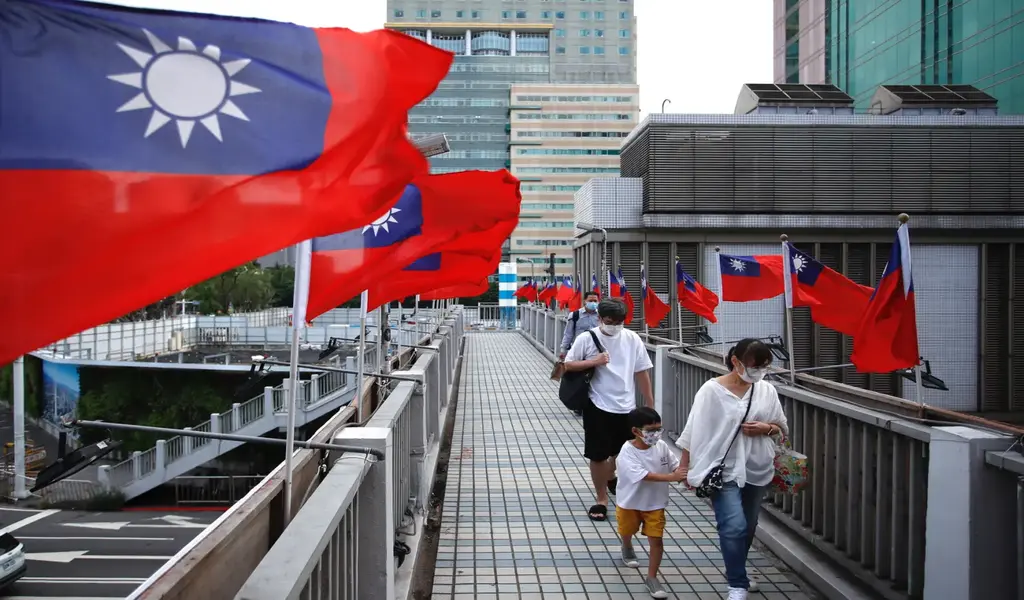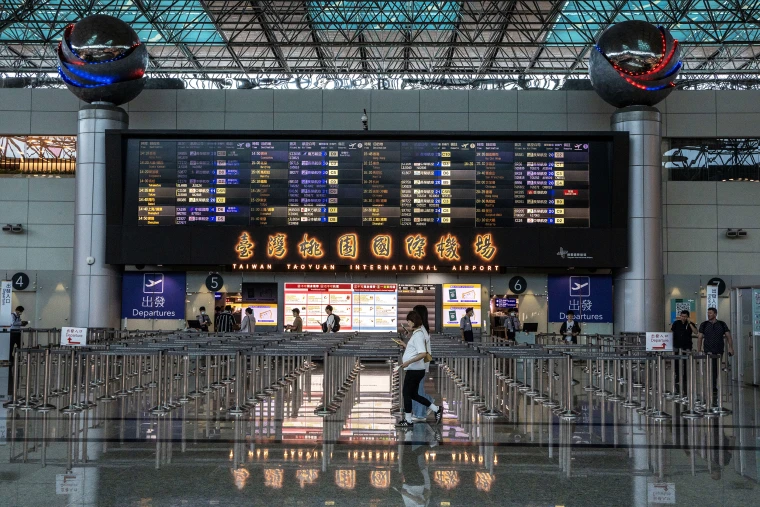World News
China’s Railway Project Running Roughshod Over Laos
VIENTIANE – Lao officials have told Samkhan Koomsanyalat that she and her family will have to leave their home in Phu Din Daeng village, nestled in a bucolic valley amid limestone cliffs, to make way for the Laos-China railway.
“The government has told us we have to leave, but they haven’t told us how much they will pay us,” said Samkhan, who currently lives about eight kilometers outside of Vang Vieng town. “We will not move unless we are paid.” Now her once peaceful home is next to a giant construction site, near the planned Vang Vieng Railway Station.
Phu Din Daeng, a village of 200 people, is situated directly in the route of the 414-kilometer Laos-China railway, a medium-speed train system (160 kilometers per hour for passenger trains and 120 kilometers/hour for freight). Upon its scheduled completion, Laos will be transformed from land-locked to “land-linked”, in the parlance of the ruling Communist Party.
The project’s scheduled launch, set for December 2, 2021, will symbolically mark the 46th anniversary of the creation of the Lao People’s Democratic Republic, the one-party communist system that has governed the country since 1975.
Construction of the Laos-China railway began in December 2016, and is now more than 20% complete, according to government media reports. Some 53 tunnels have been bored through mountains at a combined length of 37,314 meters, while 47 of the 167 bridges to be built for the line are under construction, according to the Vientiane Times.

Tunnels and bridges will comprise 62% of the track’s length, from Boten on the northern Laos-China border, to Vientiane, the capital. It will pass through scenic mountainous terrain while stopping at the country’s major tourist destinations such as Luang Prabang, the ancient royal capital, and Vang Vieng, a hipster hangout on the Nam Song River.
More than 4,000 Lao families will be “impacted,” and 3,832 hectares of Lao land will be handed over to the project, according to state media reports.
Under a China-Laos agreement signed in 2016, the two sides have set up a joint venture – the Laos China Railway Company – where the Lao sides holds 30% and China 70%. The joint company is responsible for the estimated US$6 billion mega-project, the largest investment in Laos to date worth about 35% of Laos’ meager gross domestic product (GDP) of US$17 billion in 2017.
Although the railway project is now considered part of China’s Belt Road Initiative (BRI), it was actually conceived long before the grand US$1 trillion Chinese infrastructure scheme was hatched.
Vientiane and Beijing had discussed a train link as early as 2001, culminating in the signing of a memorandum of understanding in 2010. The two communist neighbors came close to launching the scheme in 2011, but it was derailed by a corruption scandal at China’s Railways Ministry.

A tunnel under construction along the Laos-China railway. Photo: Facebook
The project was dusted off again in 2015, when both sides resumed discussing financial terms. Under the terms of the latest deal, both sides must commit over 40% of the investment (or US$2.4 billion) in cash to cover initial construction costs, to be split 30/70 with China paying the lion’s share.
That means that Laos’ cash commitment is US$720 million, of which US$250 million will come from the national budget over the next five years and the remaining US$470 million borrowed from the Export Import Bank of China at a 2.3% interest with a 35-year maturity after a five-year grace period.
Laos’ public debt is projected to reach 65% of GDP this year, up from 61% in 2017 due to increased borrowing from Chinese banks and the issuance of sovereign bonds on the Thai market. The figure already has the International Monetary Fund (IMF) concerned, judging by its most recent assessment of the country’s fiscal situation.
While US$50 million a year might seem a manageable budgetary burden, it is a fiscal challenge for little Laos, which faces declining revenues from its mining sector (big silver and copper mines are expected to be depleted in two to three years) and a low tax base of about 12% of GDP.
An estimated US$250 million is to be spent on compensation for those displaced by the rail project. Leakage in such payments is to be expected in Laos, where corruption is the norm. However, there are worries that the cash payments will detract from the government’s already inadequate budgets for health and education.
It is still unclear how Laos will pay for its remaining US$1.1 billion commitment to the project. Development bank officials in Vientiane say the remaining portion will likely be paid in kind via land contributions to the scheme, though it’s unclear how such land concessions will work.
Visits by paid by this reporter to the potential rail station sites in Luang Prabang (about 13 kilometers north of the city) and Vang Vieng (eight kilometers north) revealed huge plots of land being cleared for what looks like more than just cargo and parking space.

A new ‘love bar’ takes root near the Laos-China railway’s Vang Vieng station, August 2018. Photo: Peter Janssen
The Vang Vieng station site covers 143.8 hectares, presumably enough land to set up train facilities as well as commercial complexes and hotels.
“We heard that Laos has pledged some concessions, on bauxite or other things, in order to basically back the guarantee for the JV component,” said one international organization head who requested anonymity.
“If that is the case then I presume that there is no further government guarantee, but I don’t know, because the deal was not wholly transparent or discussed in an open way when it was negotiated.”
The lack of transparency and independent local media coverage has spawned rampant rumors, including murmurs that the government has agreed to allow 8,000 Chinese families to settle in Laos as a type of down payment on the train project.
What is clear so far is that there has been little trickle down into the local economy from the US$6 billion project. Workers on the track, estimated at over 30,000, are predominantly Chinese, so the project has created few new local jobs.
Chinese work camps, meanwhile, are situated far from city centers, and food and supplies are provided mostly by Chinese contractors rather than local vendors.
One form of local employment, however, is on the rise: prostitution. Lao locals say brothels, specializing in provincial Lao girls with little education or job prospects, are being established to cater to the Chinese workers. There is little interaction with locals beyond the commercial variety, they say.
“They leave villagers alone. The Chinese workers are like prisoners. They stay in their barracks mostly although some will come out at night, but they don’t have much money to spend,” said Phanh Bounthium, a Luang Prabang-based van driver.
“In the short term, we thought there would be some impact, but we haven’t seen it,” said Bounmy Sengphachan, deputy chief executive officer of Banque Franco-Lao (BFL), a joint French-Lao bank “But in the long term, once the railway is finished it’s going to bring a lot of people in and we will see a lot of tourism infrastructure being built that will have an impact on job creation and everything.”
That may or may not come to pass. Many of the smaller hotels and restaurants in Luang Prabang and Vang Vieng are already being rented out by their Lao owners to Chinese, Vietnamese and Korean entrepreneurs. Lao jobs at the tourism-geared businesses are largely confined to cleaners and bus boys.
Once completed, the railway is expected to facilitate even greater imports of the cheap Chinese goods which already inundate Lao markets and discourage local industries. It will also detract from locally owned bus and plane services between Luang Prabang and Vientiane, economists note.
“The railway serves a political purpose and an economic purpose,” said one Lao economist, who asked to remain anonymous. “It’s not only about Laos. We have agreed to serve as an international connection, and the government committed to it. But looking at the economic returns…not much.”
By Peter Janssen
Asian Times

World News
Marine Le Pen’s National Rally Wins the First Round in France 2024 Election

Exit polls in France showed that Marine Le Pen’s right-wing National Rally (RN) party made huge gains to win the first round of election on Sunday. However, the final outcome will depend on how people trade votes in the days before next week’s run-off.
Exit polls from Ipsos, Ifop, OpinionWay, and Elabe showed that the RN got about 34% of the vote. This was a big loss for President Emmanuel Macron, who called the early election after his party lost badly in the European Parliament elections earlier this month.
The National Rally (RN) easily won more votes than its opponents on the left and center, including Macron’s Together group, whose bloc was predicted to get 20.5% to 23% of the vote. Exit polls showed that the New Popular Front (NFP), a hastily put together left-wing alliance, would get about 29% of the vote.
The results of the exit polls matched what people said in polls before the election, which made Le Pen’s fans very happy. But they didn’t say for sure if the anti-immigrant, anti-EU National Rally (RN) will be able to “cohabit” with the pro-EU Macron in a government after the runoff election next Sunday.
Voters in France Angry at Macron
Many French people have looked down on the National Rally (RN) for a long time, but now it is closer to power than it has ever been. A party known for racism and antisemitism has tried to clean up its image, and it has worked. Voters are angry at Macron, the high cost of living, and rising concerns about immigration.
Fans of Marine Le Pen waved French flags and sang the Marseillaise in the northern French district of Henin-Beaumont. The crowd cheered as Le Pen said, “The French have shown they are ready to turn the page on a power that is disrespectful and destructive.”
The National Rally’s chances of taking power next week will rest on what political deals its opponents make in the next few days. Right-wing and left-wing parties used to work together to keep the National Rally (RN) out of power, but the “republican front,” which refers to this group, is less stable than ever.
If no candidate gets 50% of the vote in the first round, the top two candidates and anyone else with 12.5% of the registered voters immediately move on to the second round. The district goes to the person who gets the most votes in the runoff.
France is likely to have a record number of three-way runoffs because so many people voted on Sunday. Experts say that these are much better for the National Rally (RN) than two-way games. Almost right away on Sunday night, the horse trade began.
Macron asked people to support candidates who are “clearly republican and democratic.” Based on what he has said recently, this would rule out candidates from the National Rally (RN) and the hard-left France Unbowed (LFI) party. Leaders on the far left and the center left both asked their third-placed candidates to drop out.
Minority government
Jean-Luc Melenchon, leader of France Unbowed, said, “Our rule is simple and clear: not a single more vote for the National Rally.” But the center-right Republicans party, which split before the vote when some of its members joined the RN, didn’t say anything.
The president of the RN party, Jordan Bardella, who is 28 years old, said he was ready to be prime minister if his party gets a majority of seats. He has said he won’t try to make a minority government, and neither Macron nor the communist NFP will work with him.
“I will be a “cohabitation” Prime Minister, respectful of the constitution and of the office of President of the Republic, but uncompromising about the policies we will implement,” he said.
A few thousand anti-RN protesters met in Paris’s Republique square on Sunday night for a rally of the leftist alliance. The mood was gloomy.
Niya Khaldi, a 33-year-old teacher, said that the RN’s good results made her feel “disgust, sadness, and fear.”
“This is not how I normally act,” she said. “I think I came to reassure myself, to not feel alone.”
Election Runoff
The result on Sunday didn’t have much of an effect on the market. In early Asia-Pacific trade, the euro gained about 0.23%. Fiona Cincotta, a senior markets expert at City Index in London, said she was glad the outcome “didn’t come as a surprise.”
“Le Pen had a slightly smaller margin than some of the polls had pointed to, which may have helped the euro a little bit higher on the open,” she noted. “Now everyone is waiting for July 7 to see if the second round supports a clear majority or not. So it does feel like we’re on the edge of something.”
Some pollsters thought the RN would win the most seats in the National Assembly, but Elabe was the only one who thought the party would win all 289 seats in the run-off. Seat projections made after the first round of voting are often very wrong, and this race is no exception.
On Sunday night, Reuters reported there were no final results for the whole country yet, but they were due in the next few hours. In France, exit polls have usually been very accurate.
Voter turnout was high compared to previous parliamentary elections. This shows how passionate people are about politics after Macron made the shocking and politically risky decision to call a vote in parliament.
Mathieu Gallard, research head at Ipsos France, said that at 1500 GMT, nearly 60% of voters had turned out, up from 39.42% two years earlier. This was the highest comparable turnout since the 1986 legislative vote. It wasn’t clear when the official number of people who voted would be changed.
World News
Pakistan Seeks US Support for Counter-Terrorism Operation Azm-e-Istehkam

(CTN News) – Pakistan’s Ambassador to the United States, Masood Khan, has urged Washington to provide Pakistan with sophisticated small arms and communication equipment to ensure the success of Operation Azm-e-Istehkam, a newly approved counter-terrorism initiative in the country.
The federal government recently approved the reinvigorated national counter-terrorism drive, which comprises three components: doctrinal, societal, and operational.
Ambassador Khan noted that work on the first two phases has already begun, with the third phase set to be implemented soon.
Addressing US policymakers, scholars, and corporate leaders at the Wilson Center in Washington, Khan emphasized the importance of strong security links, enhanced intelligence cooperation, and the resumption of sales of advanced military platforms between Pakistan and the US.
He argued that this is crucial for regional security and countering the rising tide of terrorism, which also threatens the interests of the US and its allies.
“Pakistan has launched Azm-i-Istehkam […] to oppose and dismantle terrorist networks. For that, we need sophisticated small arms and communication equipment,” said Ambassador Khan.
Pakistan–United States relations
The ambassador observed that the prospects of Pakistan-United States relations were bright, stating that the two countries “share values, our security and economic interests are interwoven, and it is the aspiration of our two peoples that strengthens our ties.”
He invited US investors and businesses to explore Pakistan’s potential in terms of demographic dividend, technological advancements, and market opportunities.
Khan also suggested that the US should consider Pakistan as a partner in its diplomatic efforts in Kabul and collaborate on counterterrorism and the rights of women and girls in Afghanistan.
He stressed that the bilateral relationship should be based on ground realities and not be hindered by a few issues.
“We should not base our engagement on the incongruity of expectations.
Our ties should be anchored in ground realities, even as we aim for stronger security and economic partnerships. Secondly, one or two issues should not hold the entire relationship hostage,” said the ambassador.
World News
China Urges Taiwanese to Visit Mainland ‘Without Worry’ Despite Execution Threat

China has reassured Taiwanese citizens that they can visit the mainland “without the slightest worry”, despite Taiwan raising its travel alert to the second-highest level in response to Beijing’s new judicial guidelines targeting supporters of Taiwanese independence.
Last week, China published guidelines that could impose the death penalty for “particularly serious” cases involving “diehard” advocates of Taiwanese independence.
In response, Taiwan’s government urged the public to avoid “unnecessary travel” to mainland China and Hong Kong, and raised its travel warning to the “orange” level.
However, Zhu Fenglian, a spokeswoman for a Chinese body overseeing Taiwan affairs, stated that the new directives are “aimed solely at the very small number of supporters of ‘Taiwan independence’, who are engaged in malicious acts and utterances”.
She emphasized that “the vast majority of Taiwan compatriots involved in cross-strait exchanges and cooperation do not need to have the slightest worry when they come to or leave mainland China”.
“They can arrive in high spirits and leave fully satisfied with their stay,” Zhu added.

What’s Behind The China-Taiwan Tensions?
The tensions stem from the longstanding dispute over Taiwan’s status. Mainland China claims Taiwan as part of its territory and has refused to rule out using force to bring the democratic island under its control, while Taiwan sees itself as a sovereign state.
Beijing has not conducted top-level communications with Taipei since 2016, when the Democratic Progressive Party’s Tsai Ing-wen became Taiwan’s leader. China has since branded her successor, President Lai Ching-te, a “dangerous separatist”.
“The DPP authorities have fabricated excuses to deceive the people on the island and incite confrontation and opposition,” Zhu said in her statement.
Despite the political tensions, many Taiwanese continue to travel to mainland China for work, study, or business.
-

 News3 years ago
News3 years agoLet’s Know About Ultra High Net Worth Individual
-
Entertainment2 years ago
Mabelle Prior: The Voice of Hope, Resilience, and Diversity Inspiring Generations
-

 Health3 years ago
Health3 years agoHow Much Ivermectin Should You Take?
-

 Tech2 years ago
Tech2 years agoTop Forex Brokers of 2023: Reviews and Analysis for Successful Trading
-

 Lifestyles3 years ago
Lifestyles3 years agoAries Soulmate Signs
-

 Movies2 years ago
Movies2 years agoWhat Should I Do If Disney Plus Keeps Logging Me Out of TV?
-

 Health3 years ago
Health3 years agoCan I Buy Ivermectin Without A Prescription in the USA?
-

 Learning2 years ago
Learning2 years agoVirtual Numbers: What Are They For?